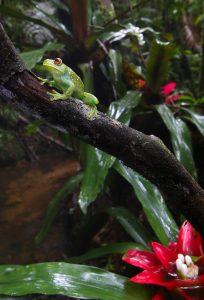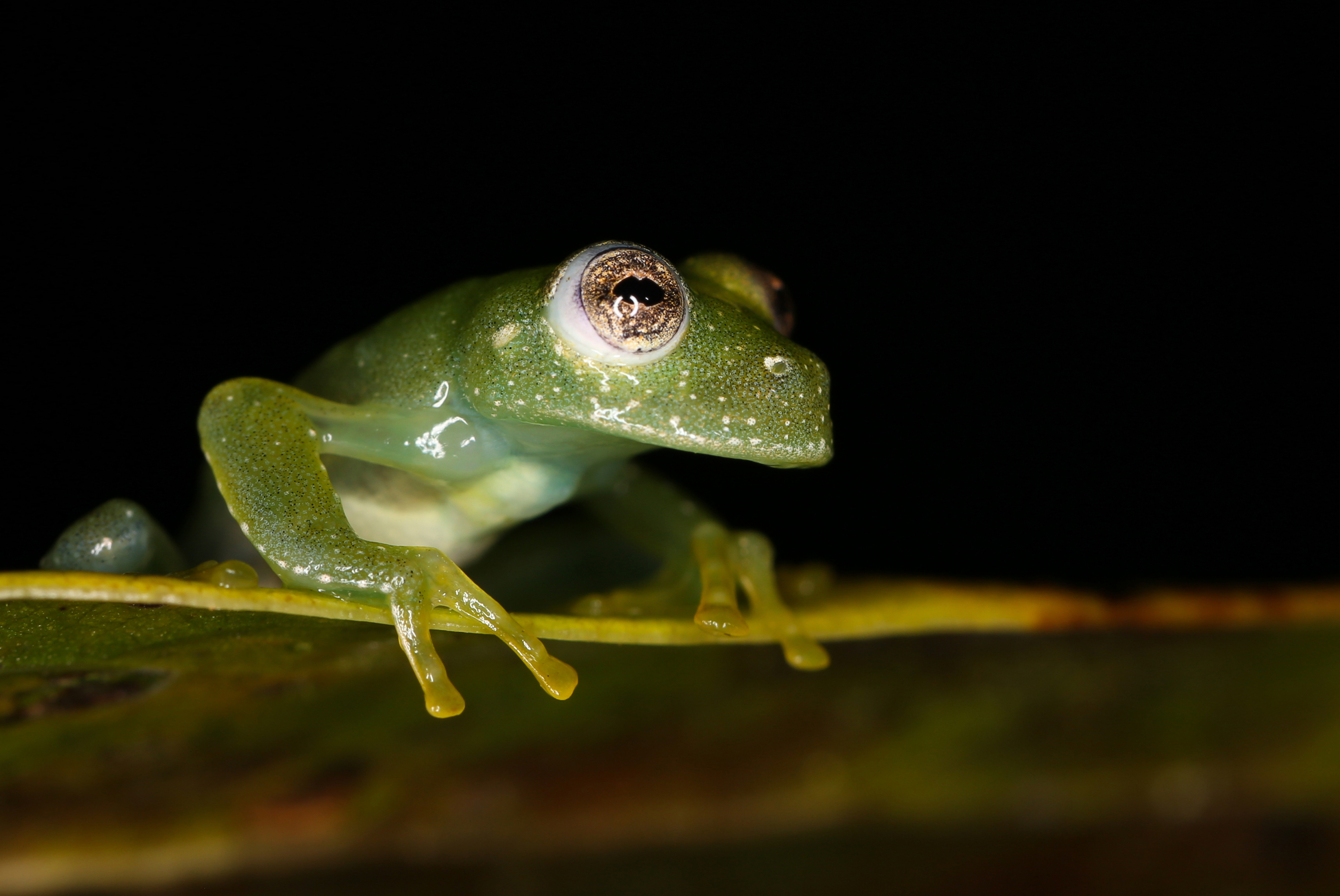
Frogs who live through noticeably different seasons during the year have a higher diversity of microorganisms living on their skin than those who experience only mild changes, according to research assisted by a biologist at The University of Alabama.
Published in the journal Nature Ecology & Evolution, the international team of researchers show how skin microbiomes are distributed globally by using amphibians as a model system.
Typically, animal diversity is greater in the tropics as warmer climates spur a range of species, but this work found skin microbiomes, or the consortium of microscopic organisms that live on host animals, are more diverse in temperate climates where summer and winter are distinct.
“Microbiomes are increasingly recognized as having key roles in human and wildlife health,” said Dr. Gui Becker, UA assistant professor of biological sciences. “We know climate can play an important role in shaping microbiomes, and, if climate does that, it can play a big role in emerging diseases.”
In general, a more diverse microbiome means the host organism is healthier, and the bacteria, fungi and viruses living on humans and animals can be part of a defense against disease. The role of skin and gut microbiomes is a trending area of discovery as their importance becomes clearer.
“It controls so much about us,” Becker said. “Frogs are a model system to understand global patterns for microbial diversity because they have been plagued with a fungal pandemic, and microbial diversity is usually correlated with healthy microbiomes.”
The research, led by Becker’s colleagues at the University of Massachusetts Boston, Technical University of Braunschweig in Germany and the Smithsonian Tropical Research Institute in Panama, examined more than 2,300 individual amphibians including frogs, toads and salamanders across 205 species spanning the globe. Becker extracted climate and geographic data to understand their effects on the microbiome on the global scale.
They found the fluctuations in seasons was the best predictor for biodiversity of the frog’s microbiome. The seasons meant more turnover in bacteria as they would go in and out of dormancy depending on weather, Becker said.
They did not find a core microbiome for species that live across different climatic zones. The common bullfrog, for example, had a different microbiome in North America than in South America.
Although frogs in more temperate areas are not necessarily healthier than those in the tropics, diverse skin microbiomes could be more adaptable to the predicted impacts of climate change, Becker said.
The research does show the global distribution of microbiomes, which could help in amphibian conservation and management strategies as about one-third of the world’s roughly 6,000 species are threatened with extinction from either deforestation or diseases, Becker said.
The research could be used to further efforts that promote or increase beneficial microbial on the skin of amphibians such as the use of probiotics, said Dr. Molly Bletz, a post-doctoral researcher at UMass Boston and co-lead on the paper.
“Knowing how the communities work helps you to do something about it so you don’t make rash decisions about adding certain bacteria that aren’t going to do well in a thermally variable environment,” Bletz said.
For this work, Becker conducted geographic analyses and spatial statistics, along with fieldwork in Brazil studying native frogs. Funding for Becker’s work was provided by the National Council for Scientific and Technological Development in Brazil.
